
Stay up to Date
Field trip activities and lesson plans.
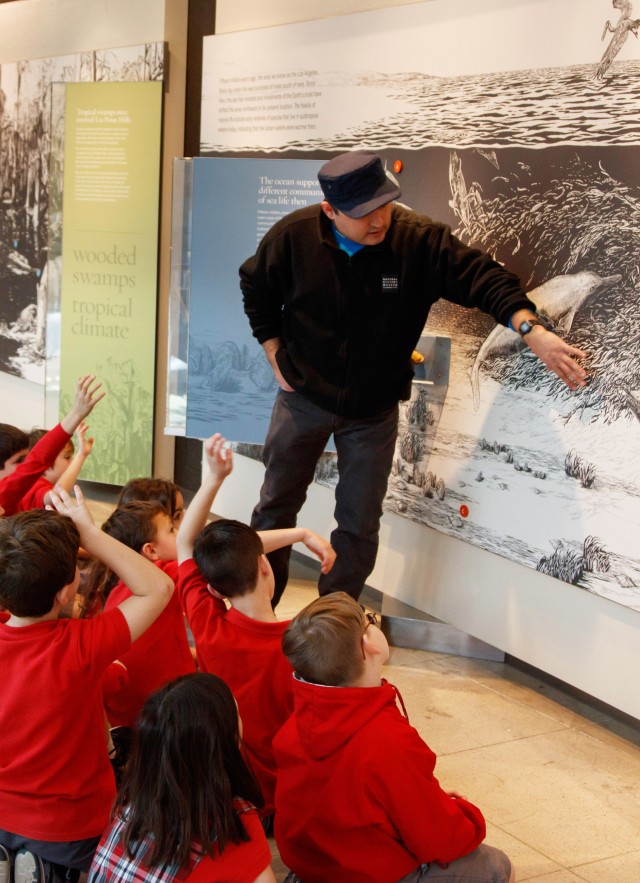
Field Trip Activities
Check out our Scavenger Hunts for student-centered learning activities to do anywhere in the museum!
Grades 2-12 | Museum Scavenger Hunt
Grades K-5 | Dinosaur Hall Scavenger Hunt
Grades 2-12 | Art of Science Scavenger Hunt
Museum Lesson Plans and Exhibition Guides
These free, printable field trip lesson plans will help your students connect classroom curriculum with their on-site museum experiences. View the exhibit halls below to find grade-appropriate lesson plans and download your copy!
Age of Mammals
Kindergarten | What is a Mammal? Identify mammal characteristics and sort them from other mammals!
Grade 2 | Mystery Mammal Observe an ancient mammal and form hypotheses about it for further investigation!
Grade 3 | Let's Investigate! Observe an ancient mammal and form hypotheses based on what you see.
Grade 4 | Investigating Adaptations Explore what adaptations are and how they reflect an animal's environment. Showcase new knowledge with a narrative presentation.
Grade 5 | Once Upon A Time… Let ancient mammal melodrama inspire a narrative script to perform with the class!
Grade 6 | Moving and Shaking Examine the effects of plate tectonics on the evolution of mammals. Watch the video associated with this lesson plan!
Grade 7 | Super Selection Examine natural selection and conduct a research project to explore what selection pressures might have influenced the evolution of a particular species represented in this exhibit.
Grade 8 | Postulating Pressures Research a mammal's natural history to try and reveal the selection pressures that drove its evolution, then share findings with a research project.
Grades 9 - 12 | Global Processes Review evolution by natural selection, then conduct a research project about a specimen in our halls to discover its evolutionary history. Watch the video associated with this lesson plan!
Becoming Los Angeles
Grades K - 5 | History Social-Science Standards Connections in Becoming Los Angeles
Grades 2 - 5 | Found History Get your students' creativity flowing by using exhibit text to create their own unique poetry.
Grade 3 | Continued Traditions Explore traditions of the Gabrielino-Tongva people and how those traditions live on today. Become a museum archaeologist to examine artifacts and write, draw, and record your findings.
Grade 4 | Coming to California Discover how 49ers traveled to California during the Gold Rush by examining museum objects and historical photographs. Investigate one migrant's journey to California in search of riches.
Grades 6 - 12 | Found History Creative writing and critical thinking come together in this L.A. history-inspired, found poetry exercise.
Bird Hall
Grades K - 5 | Bird Hall Teachable Moments Quick activities to guide student exploration in the Bird Hall.
Kindergarten Grade 1 Grade 2 Grade 3 Grade 4 Grade 5
Dinosaur Hall
Grades K - 12 | Dinosaur Hall 101 This PowerPoint walks you through the overarching stories in the Dinosaur Hall to make the most of your visit.
Pre K - K | Paleontological Practice Explore dinosaurs using a KWL approach and make guided observations using a scavenger hunt for the Dinosaur Hall.
Grade 1 | Adaptation Sensation Compare adaptations of modern-day animals with fossil specimens to determine how ancient animals used to survive.
Grade 2 | Decoding Dinos Compare and contrast dinosaurs with other animals to decode their lost legacy and formulate hypotheses about how they used to live.
Grade 3 | The Past Through the Present Discover how even life millions of years ago varied depending on the environment it lived in.
Grade 4 | The Dino Diner Use math and science to deliver excellent customer service to some paleo patrons!
Grade 5 | What Killed the Dinosaurs? Consider multiple hypotheses and present evidence for the demise of the dinosaurs with this research-based writing exercise.
Grades 6 - 8 | Dinosaurs and Definitions Through a research project, examine vocabulary using context to infer the meaning of new words.
Grade 6 | Mesozoic Measurements Convert the measurements taken in the Dinosaur Hall to create a graph comparing three species of dinosaurs.
Grade 7 | Modern Detectives for an Ancient World Use observations to form hypotheses and then revise it based on new evidence and research.
Grade 7 | Shaping Dinosaurs Use dinosaurs as a topic to understand tessellations and how to calculate area and perimeter.
Grade 8 | Sizing 'em Up Or rather... down. Draw a dinosaur specimen to scale after measuring its length, width and estimating its height.
Grades 9 - 12 | Amazing Adaptation Use a Tree Map to connect observations, inferences, and conclusions about an observed specimen in the Dinosaur Hall, then consider how natural selection played a role in that specimen's evolution.
Gem and Mineral Hall
Gem and Mineral Hall Vocabulary Sheet
Pre K | A Rocky Rainbow Explore the colorful world of gems and minerals!
Pre K | Math Rocks! Introduce measuring and graphing in a hands-on way using our specimens.
Pre K | Natural Opposites Rocks are a great place to discover naturally occurring opposites.
Grades K - 5 | Gem & Mineral Hall Teachable Moments Quick activities to guide student exploration in the Gem and Mineral Hall.
Kindergarten | Describing and Deciding Practice using new adjectives in a Gem and Mineral Hall scavenger hunt!
Kindergarten | Exploring Size Use our natural world to reinforce the concept of "big" and "small."
Kindergarten | Guided Discovery Consider the components of land. What do we know? What would we like to know?
Grade 1 | Let's Talk Rock Use scientific vocabulary to practice making observations
Grade 1 | Categorizing Collections Sort rocks and minerals into different groups by their attributes.
Grade 2 | An Adjective Habit Use scientific vocabulary to record and communicate observations.
Grade 2 | In Your Estimation Compare estimates with actual measurements of Museum specimens.
Grade 3 | Investigating Minerals Inspire inquiry and investigation with a mineral's unique structure and beauty.
Grade 4 | A Miner's Life for Me! Consider the daily trials of a miner during the California Gold Rush.
Grade 4 | California's Geologic Regions Through mineral investigation, discover California's four unique geologic regions.
Grade 4 | Properties of Minerals Examine mineral properties as a tool for identification.
Grade 4 | The Rock Cycle Compare and contrast the three major types of rocks in this probe into the rock cycle.
Grade 5 | Life of a Gemstone Articulate a mineral's life story from formation to excavation.
Grade 6 | Natural Beauty In this interdisciplinary lesson set, practice geometric reasoning and artistic expression while gaining appreciation for the natural beauty of rocks and minerals.
Grade 7 | How Old is the Earth? Introduce Earth's history through vocabulary building, observation and discussion.
Grade 7 | Lighting Up the Gem & Mineral Hall Discover the properties of light by examining their interaction with gems and minerals.
Grade 8 | Building Blocks of Minerals Explore the fundamentals of chemistry and engage in inquiry through examining a mineral's composition and structure.
Grade 8 | You Can't Fool Me! Examine the chemical and physical properties of matter by revealing their application to real life situations.
Grade 9-12 | Chemistry See chemistry in action in this adaptable lesson set that examines mineral composition and formation.
Grade 9-12 | Earth Science Classify minerals by observable characteristics and relate mineral properties to the environments in which they form.
Mammal Halls
Grades K - 5 | Mammal Halls Teachable Moments Quick activities to guide student exploration in the Mammal Halls.
Nature Gardens
Pre-K | Leaf Sorting Practice categorization by comparing, contrasting, and drawing the native plants in our Nature Gardens!
Grades K – 12 | Squirrel Observations Observe, collect, and analyze data on a popular animal that's easy to find in a schoolyard!
Kindergarten | How We Survive Investigate the four basic needs--air, water, food, and shelter--of living organisms with observations in our Nature Gardens!
Kindergarten | Living and Non-Living Determine what makes something living or non-living with a journaling or photo-taking activity in our gardens that turns into a collage back in the classroom.
Kindergarten | Move It, Move It! Mimic animal movements and apply what you observe about motion in our Gardens to drawing and describing.
Grade 1 | Plant Parts Discover the parts of a plant by growing them in the classroom, then comparing your observations to the plants in our Nature Gardens!
Grades 2 – 12 | Sounds of Nature Practice listening and observing nature to understand more about the biodiversity of our city.
Grade 2 – 3 | Marvelous Metamorphosis Introduce students to complete metamorphosis while looking for ladybug eggs, larvae, pupae, and adults in the Nature Gardens!
Grade 7 | Insects and Biodiversity Explore L.A.'s biodiversity through bugs and introduce classification.
Grades 9 – 12 | Ecology and Energy Flow Explore how energy moves between organisms in our Nature Gardens!
Grades 9 – 12 | P lant Parenthood Observe how artificial selection and natural selection play out in our Nature Gardens!
Nature Lab
Grades K – 12 | My Wild L.A. Tell your story about L.A. nature and use it to develop a narrative work and inspire a research project!
- Our Mission
Getting the Most Out of Museum Field Trips
A plan to give students agency over what they learn while visiting a museum creates a significantly more beneficial experience.
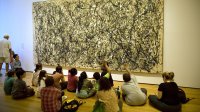
I’ve led many learners on several museum excursions, not just as a classroom teacher, but also as a museum educator and guide, and I’ve seen a lot of different takes on the field trip to a museum. Students can be divided up into tightly managed groups, or they can be let loose to explore. They can arrive equipped with worksheets, clipboards, and iPads, or just the questions in their heads.
In thinking about all the ways this learning experience can work, I’ve observed that the most pronounced differences in the value of this kind of experience came as a result of how a teacher answered three essential questions:
- What kind of structure will be provided for the visit?
- What will be done before and after the visit happens?
- How can the visit go beyond content acquisition?
Structuring For Success
Teachers have often asked me what level of independence is best for their visit. I’m not referring to freedom of movement or the level of supervision that students need. When I say independence, I’m talking about room to explore. Do you allow students complete freedom to move through the galleries and exhibits at will, or do you tightly schedule and curate their time to ensure that they get the topical information aligned to your learning goals?
In my experience, for a museum visit to be truly impactful, balance is needed, and the research seems to agree. Recent studies indicate that allowing learners a degree of choice in what they interact with in an informal learning space leads to deeper learning. However, we also know that students benefit from structure. Without it, they might end up seeing everything, learning nothing. You can use a scaffolded framework to get the best of both worlds, regardless of how long your visit might be.
First, begin your visit with the entire group together. This allows you to set the tone and model behavior for the visit, and you can take advantage of any educational programs the museum offers as a shared experience for your students. It also allows the staff to orient your students to resources that are relevant to your learning goals.
Then, divide your students into groups. Direct them to a specific exhibit or gallery that pertains to the learning goal that prompted your visit. As students move between the different displays or resources, you can circulate and provide guidance on things they should make sure to see, also noting which students are able to conduct themselves appropriately with less direct oversight.
Finally, allow them free choice. Students can explore other areas for the remainder of their trip in small groups. They can pursue unrelated but engaging topics that they might be interested in, even if they don’t directly relate to the purpose of your trip.
Teachers who have used this model to structure their visit reported higher participation and richer understanding from their students as a result.
Focus on the Before and After as Much as During
Permission slips, chaperones, worksheets. Teachers’ main focus when it comes to field trips is usually the logistics involved in getting there. Helping students think about the experience within the context of the unit or project they’re working on comes second, but there’s a simple way to bring it back to the forefront—anchor questions.
Creating an open-ended anchor question that guides the museum experience by tying the learning goal to the place is useful not only during the visit, but also before and after the experience. If you introduce the question to students early, they can focus on what they need to learn prior to their visit, and afterward they can use it to measure the success of their visit and consider next steps.
Here are some key questions that students can consider:
- What background information do you need in order to answer the question?
- What information or questions are you hoping to gain insight into during the visit?
- What sections or exhibits will be most helpful to explore when we arrive?
- What tools and resources can you gather ahead of time that will help you with finding answers?
- What resources or exhibits from the museum contributed to answering the anchor question?
- Did the visit leave any questions unanswered or generate new questions?
- Are there any new topics, even unrelated ones, that inspired curiosity?
Use Museums For More Than Content
Utilizing museums as a source of content information is fine, but textbooks do the same thing. So, if that’s your only plan for a museum visit, you’re missing opportunities to engage students in critical analysis. Many museums were built decades ago, and updating their exhibits to make them more relevant sometimes takes decades more. Without careful consideration, you might be unintentionally exposing students to developmentally inappropriate exhibits, outdated narratives, or less inclusive, and therefore inaccurate, information.
However, you can use the experience to create ownership and empower students to find ways to make these spaces more inclusive. When you do this, students not only consume information but are actively engaged in a revision process that asks them to think critically and play a role in the improvement of the experience for other visitors. Try the following three activities.
An option for young students. Art museums are great resources, but they are generally not designed for younger learners. Elementary students can engage with art and develop literacy at the same time when you give them adjectives and ask them to find a piece of art that fits their word. They can then write the name of or present their artwork and share why they think it’s a good fit for their assigned words. I’ve seen this done masterfully with Apples to Apples: Green Cards .
Stories told, stories hidden. Sometimes, what a museum doesn’t display can be even more informative than what it does display. Challenging students to look critically at the displays and consider what information is shared and what information might be missing can lead to interesting discussions about access and relevance. A great resource for this kind of exploration is the Field Trip guide from Monument Lab .
Remix the resources. Much of curators’ work in a museum involves the sequencing of objects so that they tell a story. Exploring “how objects speak” is a compelling concept that can lend itself to deeper learning after a visit. During a visit, students can look at objects from a particular gallery, take photos, and then create their own exhibits that incorporate the objects in service of new narratives. They can fill out their new exhibits with images or objects from resources like Google Arts & Culture .
Art Museum Lesson Plans for Field Trips
- Lynn-nore Chittom
- Categories : The arts in middle school
- Tags : Teaching middle school grades 6 8

Why Plan Ahead?
Taking a group of students to an art museum is a wonderful opportunity to expand their understanding of art appreciation . It can also be a bit
overwhelming as art museums are typically quiet, reflective places and children are often not so quiet or apt to reflection.
With this obstacle in mind, good art museum lesson plans can make the difference for everyone involved. They might even serve as the tool for turning a possible nightmare field trip into a wonderfully memorable and, possibly, life-changing experience for your students.
Doing Your Homework
The ticket to making an art museum field trip fun for kids of all ages is to get them to engage with the art they are seeing. This does not mean touching the art, but it might mean letting the art touch them. While this may sound a little flowery, the intent is legitimate. Art patrons reflect on art in a way that enables the art to speak to them in some way. Similar goals should be included in your lesson plans.
The question, of course, is how to accomplish this goal? It is the responsibility of the art teacher (or other teacher bringing students to an art museum) to instruct the students on how best to experience an art museum. This should include expected behavior as well as information on whatever assignments are to accompany the field trip. Yes, you read that right, assignments. The key to engaging students at an art museum is to raise the expectation of the trip to include feedback from the students. Without feedback students will wander the museum, chat among themselves and thoroughly miss the point of the excursion. With an assignment, they are required to experience the museum. The nature of the assignment determines how much they will appreciate the experience.
A Little Prep-work
Assuming the students have never been before, a lesson on art museum etiquette is a good place to start. This instruction should include warnings about walking not running, remaining quiet so that other visitors can also appreciate the art, and not touching any of the exhibits. While this explanation might seem obvious to adults, it is often necessary to over-emphasize the obvious and best not to assume the kids will know what to do on their own.
Prior to bringing the students to an art museum, it is a good idea for the teacher to visit the museum on their own. This trip is a bit of a recon tour to see what pieces are on display. This might ultimately relate to the work that will be assigned, or may simply serve as an expanded version of the tour to which you will be bringing the students. Either way, familiarizing yourself with the material the students will be seeing, will mostly prove valuable on field trip day.
Creating Assignments
Once the recon tour is complete it is time to develop the assignment for the students. This “art and writing” assignment will be an essay question format and will likely require students to use a clipboard on the day of the trip. Students are intended to separate, explore the museum, answer their handout questions and meet back at a given time. If this is not appropriate for your age group, it is also possible to adjust the questions and allow the students to remain in one group or small groups.
Here are some sample questions based on an imaginary field trip to the Art Institute in Chicago .
- Find the piece The Village of the Mermaids by Paul Delvaux. What do you think is happening in this painting? Does this painting make you feel warm or cold? Explain your answer.
- Find the piece A Sunday on La Grande Jatte by George Seurat. How does his use of pointillism affect the feel of the painting? Does this piece have anything to say about upper class society in Seurat’s time? Explain your answer.
- Find the piece Greyed Rainbow by Jackson Pollack. Describe your feelings about this painting. For instance, does this piece make you feel happy or sad, warm or cold, bored or inspired? Do you like this piece? Why or why not. Would you consider this art?
These essay style questions should be written in such a way that they inspire the students to engage the art in a meaningful and memorable way. For younger students, questions could be made simpler and even conducted in a group environment. For example “How many of you like this painting?” “How many do not?” “Those of you who like it, could you please give some reasons why you like this piece?” Allow time for student answers. Then ask those who did not like it for their input.
Another approach would be to allow the students to choose which art pieces strike them and explain in essay answers why they were attracted to each piece.
A Good Time Was Had By All
Hopefully using these art museum lesson plans will provide a positive experience for both the teacher and the students. Post a comment and lest us know how your visit went.
5 Stress-Free Tips for Planning Art Museum Field Trips
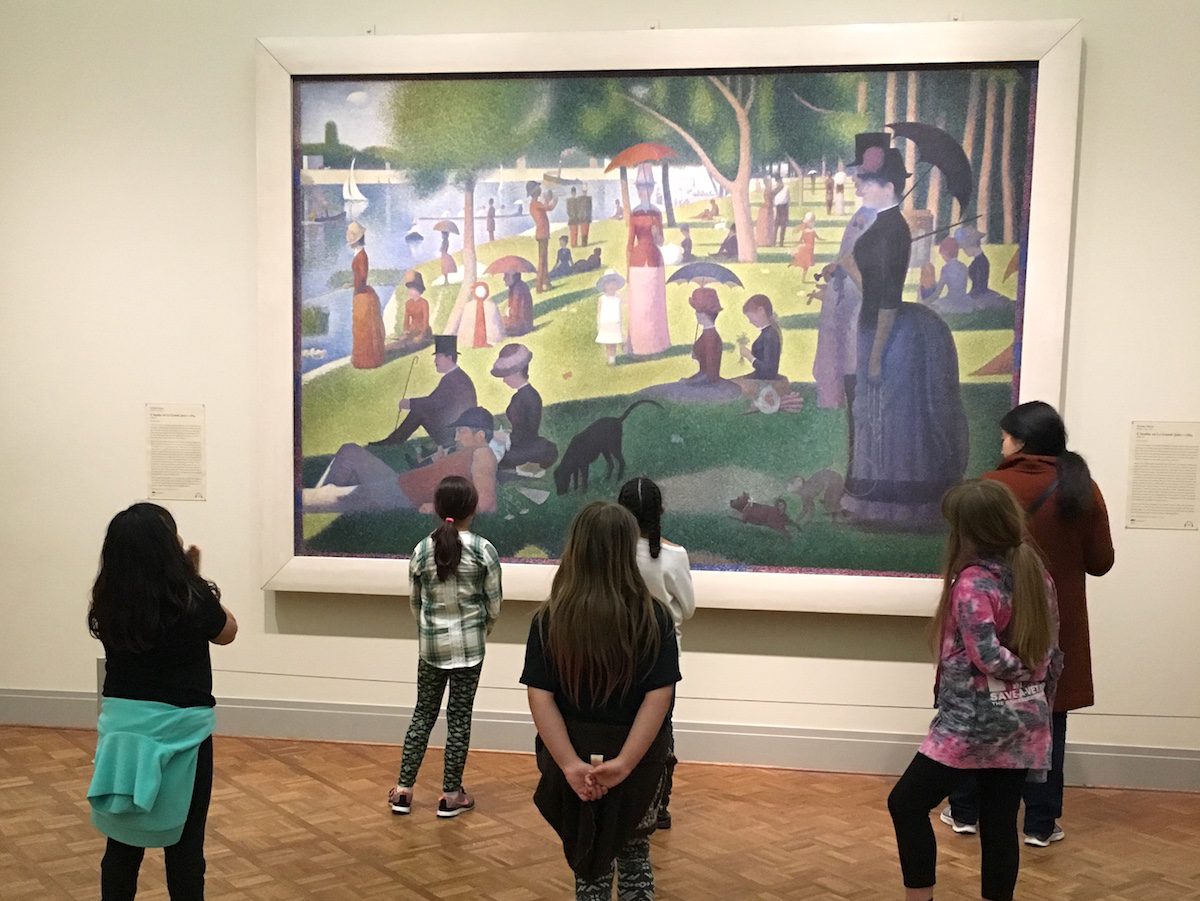
Taking students to experience art in person can make for an unforgettable field trip. For inexperienced and new teachers alike, the thought of organizing such a trip can be daunting. However, don’t let this deter you from creating a truly engaging experience for your students.
Here are 5 tips to help you pull off a memorable field trip.
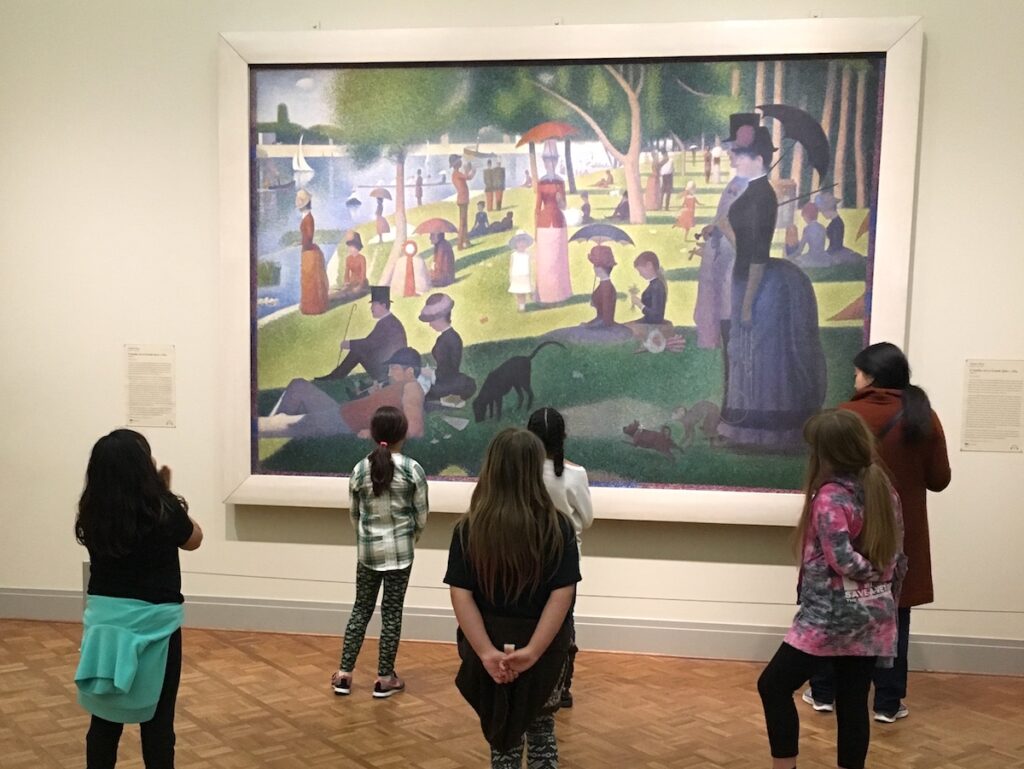
1. Schedule and plan ahead.
There are a lot of planning details that go into a school field trip. Start by looking at your school calendar and propose a few potential dates to administration and students’ classroom teachers. Once you’ve ruled out any date conflicts, make arrangements with the art museum.
Several museums offer docent-led tours, special activities, and/or rates specifically for school visits. Book your date with the museum early so that you can arrange the best experience possible for your students. Find out the museum’s specific policies on student to chaperone ratios, cameras, backpacks, and more before arriving.
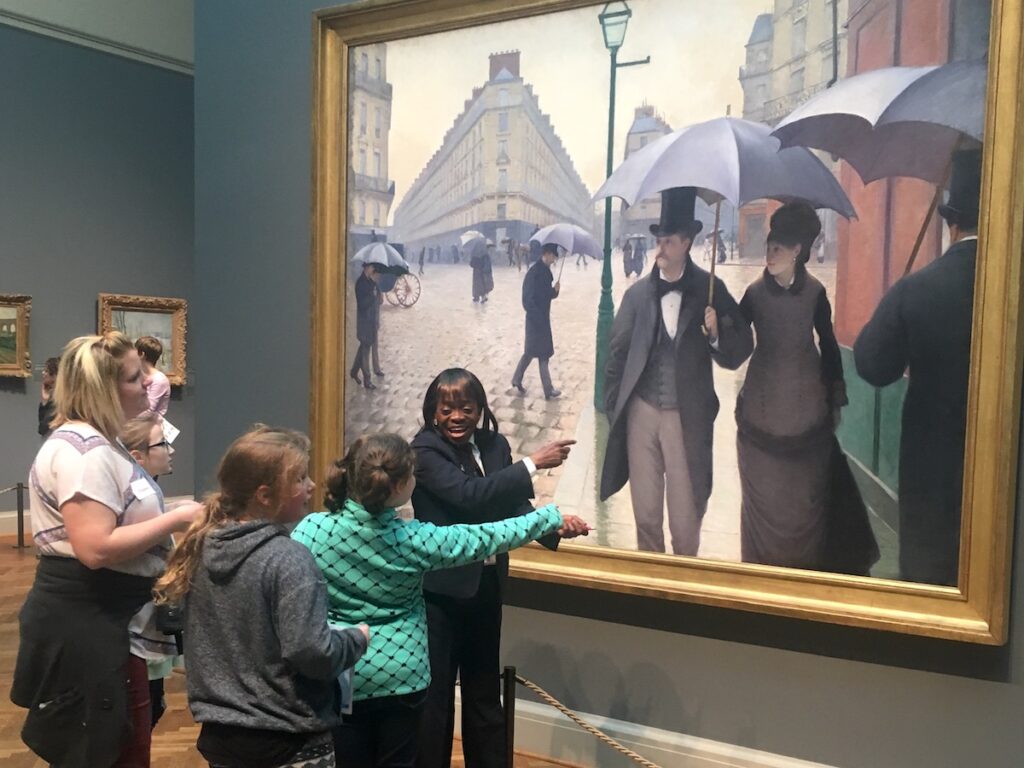
2. Look for curriculum connections.
Take a look at your curriculum units; specifically the artists and artwork you introduce students to over the course of a year. Identify key works from your curriculum that are also represented in the museum’s collection.
If the museum you are planning to visit doesn’t have any specific works from your curriculum, consider taking a look at artwork related to the skills or themes your students have learned about.
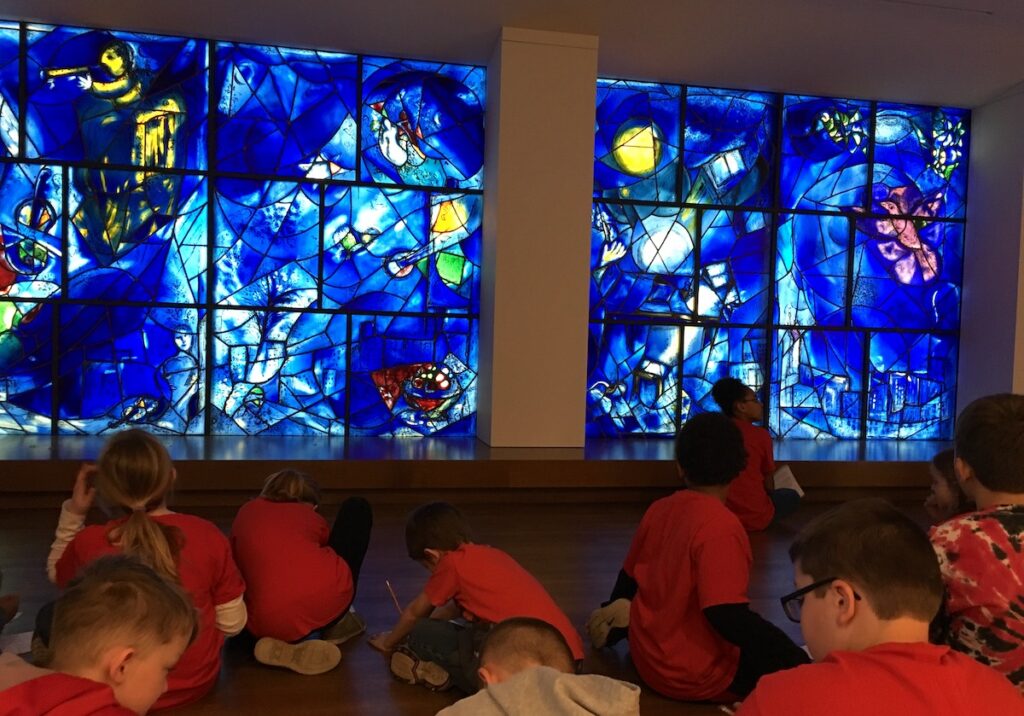
You may also want to plan a new lesson around a specific work at the museum and schedule it around your visit. For example, if you’re going to the Art Institute of Chicago, you could plan a lesson around Marc Chagall’s “American Windows.” You could plan the museum project just before your trip, or just after. Either way, you’ll be creating a strong connection to artwork students will see in person.
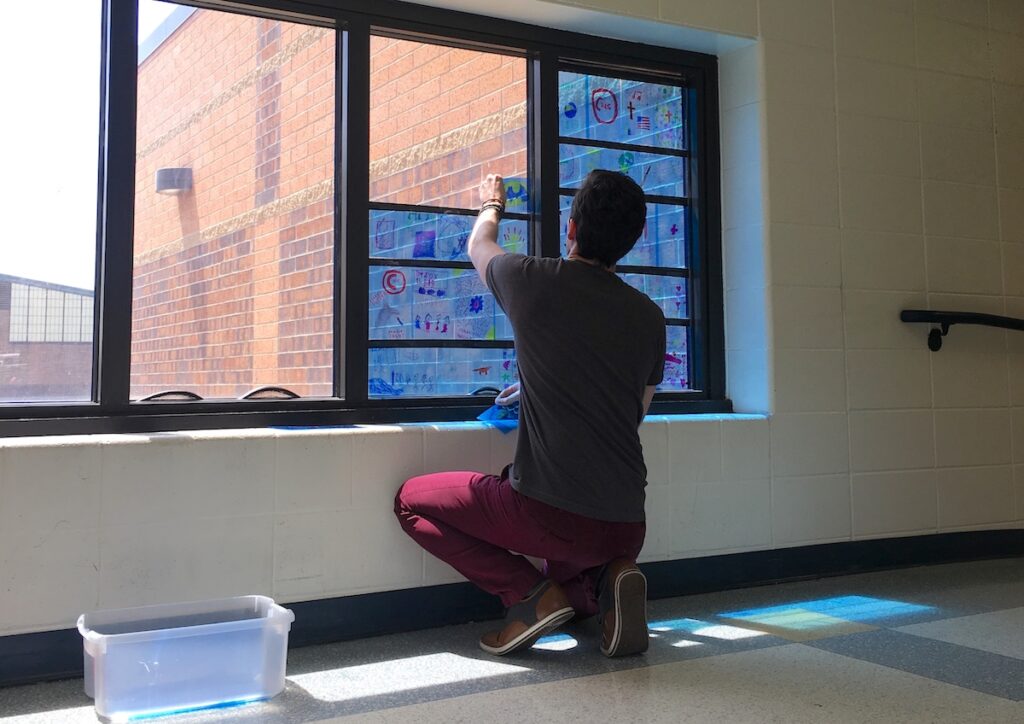
3. Design a museum guide that leaves room for student exploration.
Highlight specific rooms or artwork you want students to experience. Try to keep some unstructured time available for students to explore on their own as well. You want students to see some of the art you’ve introduced them to in the classroom. However, part of the museum field trip should also allow students to discover new favorites.
Create a prioritized list of must-see work for students to explore and where to find them. You can make this a scavenger hunt for students to check off with their chaperones along the way. Provide a few open-ended questions about some of the artworks to provide chaperones with potential discussion prompts.
Leave a portion of time for students to look at the museum map and do some exploring based on their own personal interests. Dragon enthusiasts may be interested in a section of Medieval Art. Fashion, animation, art from specific countries, and more can be areas found in most art museums that may not be a part of your normal curriculum.
Remember this field trip may be the one opportunity some of your students have to visit an art museum. Allow them to explore their natural curiosities and make the most of their trip.
4. Reach out for volunteers to ensure safety and fun for all students.
The more chaperones you can take, the better your student to adult ratio will be. Taking students to a new place, often in a big city, can be scary. Reach out to your students’ parents to volunteer as chaperones. This takes some of the worry off of your shoulders and allows you to move about the museum and check in with the various small groups.
Give clear directions to your chaperones with a list of your expectations. Include meetup times and locations for lunch and bus loading. Be sure to get a list of all of your chaperones’ cell phone numbers so you can reach them in case of emergency. You will want to share yours as well.
5. Plan a practical place for lunch.
When planning your field trip, you will want to have a lunch plan that works well for the place you are visiting. Check and see if the museum allows sack lunches for school visits, or has group rates on meals. The museum may also have a cafeteria you could check for an average meal price.
Alternatively, you could take students somewhere to eat near the museum. Keep in mind that the focus of your field trip is the art museum, and you want to maximize your time there. The trip to the pizza or burger place should not end up being the highlight of your trip. Plan a practical lunch location so that your students can eat in a timely fashion, and return to exploring the great collection of art they came to see.
If you’re interested in taking an in-depth look at planning field trips, be sure to check out the Planning Field Trips PRO Learning Pack. You’ll gain even more insight into planning an unforgettable experience for your students.
What tips have made your art museum field trips successful?
What’s holding you back from planning your first field trip?
Magazine articles and podcasts are opinions of professional education contributors and do not necessarily represent the position of the Art of Education University (AOEU) or its academic offerings. Contributors use terms in the way they are most often talked about in the scope of their educational experiences.

Jordan DeWilde
Jordan DeWilde, a high school art educator, is a former AOEU Writer. He aims to encourage students’ individual creativity through a diverse and inclusive curriculum.

12 Art and Poem Pairings to Inspire Creative Expression in Your Art Room

3 Ridiculous and Spontaneous Ways to Bring Poetry Into the Art Room

Unplug with 12 Innovative Early Finisher Activities for the Secondary Art Room

46 Early Finisher Activities to Boost Creativity in Your Elementary Art Room
- Hours & Location
- Accessibility
- Group Visits
- Health & Safety
- Wed–Fri 10–5 Sat–Sun 10–6 Mon 10–5
- Lexicon Lane
- Events & Public Programs
- Virtual Tour
- Journalist-in-Residence Program
For Educators
- National Poetry Month
- Mission & Values
- Staff & Leadership
- Franklin School
- Publications
- Make a Gift
- Become a Member
- Member Portal
- Corporate Membership
- Individual Giving Circles
- Legacy Gifts
- Host With Us
- Reserve Passes
Planet Word is pleased to share our love of words, language, and reading with educators and learners of all ages.
Field Trips Lesson Plans Planet Wordshops Educator Outreach
Field Trips
Inspire your students with the power, fun, and beauty of words and language at Planet Word! Planet Word is pleased to welcome groups for museum visits. Title I schools are free, always. Choose the school visit option that works best for you and your students:
Self-Guided Gallery Visits
Watch books come to life, sing your favorite song, and learn why words matter at Planet Word! Planet Word is pleased to welcome groups for on-site, hour-and-a-half long self-guided museum visits. This option is perfect for you and your group to choose your own adventure or achieve your own learning goals.
Wordshop Experience Packages
Dive deeper with one of Planet Word’s Common Core aligned Wordshop packages. Target your learning with an hour-long, educator-facilitated Wordshop on one of six topics of your choosing (grade dependent) followed by an hour of focused self-guided gallery time to extend the learning!
Virtual Field Trips
Lesson plans.
Use our free, teacher-vetted lessons to help your students understand the power of words and take full advantage of a field trip to Planet Word. Resources were designed based on feedback from a council of local educators, are standards-aligned, and include in-the-moment teaching and facilitation supports. The ready-to-go Google Slides format allows our resources to be instantly implemented in your classroom or easily customized to meet your students’ needs. Lessons are available for elementary, middle, and high school students.
Planet Wordshops for Students
Wordshop packages are offered from 10 a.m. – 12 p.m. and 12 p.m. – 2 p.m. on weekdays when Planet Word is open, starting with the Wordshop and ending with an hour of focused gallery time.
Wordshops are designed for classes of 35 or fewer and last an hour unless otherwise noted. Virtual Wordshops cost $125; on-site Wordshops cost $200, plus the cost of group admission. Fee waived for local* DMV Title I schools and DMV non-profit organizations serving disadvantaged populations.
*Planet Word defines local as the following jurisdictions: D.C., Maryland (Anne Arundel, Baltimore, Howard, Montgomery, and Prince George’s counties) and Virginia (Alexandria, Arlington, Fairfax, Falls Church, and Prince William counties).
Go Bananas for Idioms (grades 3–5)
Unleash the creative and comic potential of idioms and learn about the difference between literal and non-literal meanings. The program features a matching game, an opportunity to create and share an idiom drawing, and heaps of idiom-based humor — all delivered in 45 minutes.
Request a virtual Wordshop Request an on-site Wordshop Additional details
Words Matter (grades 4–7)
The way we tell our own story impacts everyone around us. Using videos included in the Words Matter gallery, students analyze a personal narrative to understand storytelling techniques, all while connecting to broader themes and social issues. This Wordshop concludes with students telling a story of their own.
Sounds Like Poetry! (grades 5–7)
Delight in sprightly “i”s and “e”s or wallow in long, mournful “o”s as we explore how poets play with the sounds of words to evoke specific feelings and tones in their work. Students will also practice those techniques in a short writing activity.
I’m Sold! (grades 7–10)
Guide your students through several advertising copywriting techniques that make ads memorable and persuasive. The program will finish with students writing their own copy, while discussion centers the idea of being a savvy consumer.
Can You Trust It? (grades 9–12)
Explore facts and opinions, types of sources, and motive in both news and social media. Then, do a fact-checking exercise to practice 4 key questions when determining what is trustworthy. Developed in partnership with News Literacy Project.
“These Words Are Spoken” (grades 10–12)
In this SEL, DEAI focused program, students will play a dialect game, analyze the spoken word poetry piece “Broken English” by Jamila Lyiscott, and affirm their language identity. Identity, history, tradition, and culture all show up in the ways we speak.
Educator Outreach
Educator newsletter.
Sign up to receive email updates on resources just for educators, and to join a community interested in growing students’ love of reading, writing, and the power of words.
- Name First Last
- Survey 1: Prehistory to Gothic
- Survey 2: Renaissance to Modern & Contemporary
- Thematic Lesson Plans
- AP Art History
- Books We Love
- CAA Conversations Podcasts
- SoTL Resources
- Teaching Writing About Art
VISITING THE MUSEUM Learning Resource
- AHTR Weekly
- Digital Art History/Humanities
- Open Educational Resources (OERs)
Survey 1 See all→
- Prehistory and Prehistoric Art in Europe
- Art of the Ancient Near East
- Art of Ancient Egypt
- Jewish and Early Christian Art
- Byzantine Art and Architecture
- Islamic Art
- Buddhist Art and Architecture Before 1200
- Hindu Art and Architecture Before 1300
- Chinese Art Before 1300
- Japanese Art Before 1392
- Art of the Americas Before 1300
- Early Medieval Art
Survey 2 See all→
- Rapa Nui: Thematic and Narrative Shifts in Curriculum
- Proto-Renaissance in Italy (1200–1400)
- Northern Renaissance Art (1400–1600)
- Sixteenth-Century Northern Europe and Iberia
- Italian Renaissance Art (1400–1600)
- Southern Baroque: Italy and Spain
- Buddhist Art and Architecture in Southeast Asia After 1200
- Chinese Art After 1279
- Japanese Art After 1392
- Art of the Americas After 1300
- Art of the South Pacific: Polynesia
- African Art
- West African Art: Liberia and Sierra Leone
- European and American Architecture (1750–1900)
- Eighteenth and Early Nineteenth-Century Art in Europe and North America
- Eighteenth- and Nineteenth-Century Sculpture
- Realism to Post-Impressionism
- Nineteenth-Century Photography
- Architecture Since 1900
- Twentieth-Century Photography
- Modern Art (1900–50)
- Mexican Muralism
- Art Since 1950 (Part I)
- Art Since 1950 (Part II)
Thematic Lesson Plans See all→
- Art and Cultural Heritage Looting and Destruction
- Art and Labor in the Nineteenth Century
- Art and Political Commitment
- Art History as Civic Engagement
- Comics: Newspaper Comics in the United States
- Comics: Underground and Alternative Comics in the United States
- Disability in Art History
- Educating Artists
- Feminism & Art
- Gender in Nineteenth-Century Art
- Globalism and Transnationalism
- Playing “Indian”: Manifest Destiny, Whiteness, and the Depiction of Native Americans
- Queer Art: 1960s to the Present
- Race and Identity
- Race-ing Art History: Contemporary Reflections on the Art Historical Canon
- Sacred Spaces
- Sexuality in Art
While most students understand that objects inside museums have important cultural, ideological, economic, and art historical value, they don’t always recognize the role of these institutions to shape and reinforce such values. AHTR’s Visiting the Museum Learning Resource aims to help students think more critically about the broader implications of art museums and to better understand their integral relation to the study and practice of art history.
Project History
In 2012, with support from a Baruch College Teaching & Learning with Technology Partnership, AHTR produced nine short videos that showcase the interior and exterior settings of well-known museums throughout New York City. Designed to suggest the experience of visiting the museum, these videos importantly allowed instructors to raise questions about museum design in their classes, regardless of the logistical challenges that often prevent organized field trips.
In 2018, a grant from CUNY’s OER initiative allowed AHTR to expand these resources with additional bibliography, adaptable lesson plans and assignment ideas, and strategies that both students and faculty can use to build greater understanding of museums as social spaces where embodied experience contributes to art’s meaning and value.
We welcome feedback and suggestions about how we might improve this resource. Please send comments to [email protected] .
For Students
This resource is designed for students, but instructors may also adapt it for use in assignments that require students to visit museums on their own. It provides background information that may be useful to individuals unfamiliar with art museums, and suggestions for how anyone—including experienced museum goers–can make the most of their museum experience.
How to Visit an Art Museum–a guide for students
The thing about labels, for instructors.
Faculty want art history students to have opportunities to engage directly with original art objects in museums or gallery settings. These experiences underscore the discipline’s central reliance on material objects as a primary source of inquiry, and reveal the underlying problems and implications of their use.
This resource offers adaptable lesson plans and strategies for museum-based experiences supporting course objectives related to
- object-based study and research
- visual literacy and communication of visual phenomena
- critical analysis of museum collection and exhibition practices
Making the Most of Museums
Politics of space and (in)visibility, museum spaces: video collection.
- The Lower East Side Tenement Museum
Teachers know that it’s not always possible to organize a group visit for large numbers of students, when class meets early morning or at night, or if transportation is not easily available. These short videos offer mini-tours of the spaces found in nine of New York’s best known museums. They can be used to prompt class discussion, raise broader issues, or prepare the class for visits to local exhibition spaces.
All Videos and Suggested Teaching Ideas
- The Brooklyn Museum of Art
- The Metropolitan Museum of Art
- The New Museum
- The Rubin Museum of Art
- The Solomon R. Guggenheim Museum
- The Studio Museum in Harlem
Additional Resources
In addition to the materials below, many museums provide online resources and professional development workshops for educators, appropriate for all levels of instruction. Be sure to reach out to museum educators in your community and institution for additional resources and instructional ideas.
Visiting the Museum: Bibliography
See related posts on the ahtr weekly, artmuseumteaching.com, social justice & museums resource list.
Crowdsourced project; Initiated and edited by La Tanya S. Autry, @artstuffmatters, July 2015

Tools for Understanding Museums–Smarthistory.org
First things first–smarthistory.org, moma learning, the museum of modern art online courses (coursera), art & inquiry: museum teaching strategies for your classroom, art & activity: interactive strategies for engaging with art, raamp (resources for academic art museum professionals), raamp campus outreach and engagement , raamp instructor materials, raamp student materials.
virginiaspivey, "VISITING THE MUSEUM Learning Resource," in Art History Teaching Resources, July 24, 2018, accessed April 16, 2024, http://arthistoryteachingresources.org/lessons/visiting-the-museum-lesson-template/.

- For HR & Businesses
- For K-12 Educators
- For Universities & Colleges
- For Tourism
- For Events & Conferences
- For Non-Profits
- For Experience Facilitators
- Lessons from the Chase
- Reviews from Participants
- Company Updates
- Goosechase in the News
- Go to Goosechase.com
Lesson Title: Exploring History Through a Museum Scavenger Hunt
As educators, we know that your expertise and creativity play a crucial role in delivering effective and engaging learning experiences. We wanted to help get your students up and moving and even more engaged in your already awesome lessons! As such, we’ve designed this lesson plan that can be used while taking part in a museum field trip with your students. It is simple, perfect for any grade, and is intended to be versatile so that you can easily change it up to make it an effective tool for your unique student and classroom needs! Once you’ve taught the curriculum content in the classroom, feel free to use this template alongside a Goosechase Interactive Experience to help make your field trip and student engagement stronger!
- Students will engage with historical artifacts and exhibits in a museum setting to deepen their understanding of the curriculum.
- Students will develop critical thinking and observational skills through participation in a museum scavenger hunt.
- Museum map or floor plan
- A mobile device with the Goosechase app downloaded
In-class Preparation:
- Engage students with a brief discussion about their previous museum experiences.
- Share your own positive experiences and express the excitement of exploring history through artifacts.
- Explain the objectives of the activity: to connect classroom learning to real-world artifacts, enhance observation skills, and make history more tangible.
- Introduce the museum Goosechase Experience as a fun and interactive way to achieve these objectives.
- Dedicate time to ensuring all students have the Goosechase app downloaded and joined to the Experience to avoid any tech issues the morning of your Museum visit.
Museum Visit and Scavenger Hunt:
- Discuss the importance of respectful behavior while onsite.
- Begin the museum visit with a guided tour or orientation by museum staff.
- Provide students with background information on key exhibits related to the curriculum.
- Briefly explain the instructions, emphasizing the importance of careful observation and critical thinking.
- Emphasize the significance of teamwork and cooperation during the scavenger hunt.
- Provide an overview of the scavenger hunt rules and expectations.
- Allow students to explore the museum in small groups.
- Encourage students to use their observation skills to find specific artifacts, answer questions, or complete tasks on the Goosechase mission list.
- Documentation of student observations are recorded within the Goosechase app and automatically saved to their camera roll.
- Bring students together to discuss their Goosechase scavenger hunt experiences.
- Encourage them to share interesting discoveries, challenges faced, and connections made to classroom learning.
- Distribute reflection worksheets or journals.
- Have students reflect on how the interactive experience deepened their understanding of historical concepts and artifacts.
Optional activities upon return to the classroom:
1) conclusion and follow-up:.
- Summarize the key takeaways from the museum visit and scavenger hunt.
- Emphasize the relevance of the experience to classroom learning.
- Download Goosechase submissions and create a presentation for the class, highlighting exceptional photos or videos. Use them as discussion starters for students to share stories and reflect as a team on what they experienced.
- Assign follow-up activities, such as essays, presentations, or creative projects based on the museum visit.
- Discuss the importance of connecting museum experiences to academic studies.
2) Assessment:
- Assessment will be based on participation in the scavenger hunt, group discussions, and the quality of reflections.
3) Homework Assignment:
- Students may be assigned a follow-up project based on their museum experience.
Want a copy of this lesson plan to use with your class? Click to download!
What is goosechase edu.
Goosechase is an online platform that helps educators create and run interactive learning experiences in their classrooms and beyond. Sign up and try creating an Experience, or contact us to learn more about our school and district-wide solutions!
- K-12 Educators
Rebecca Everson
Goosechase EDU Ambassador Program Manager & K-6 Teacher
Recommended for you

Virtual Classroom Scavenger Hunts
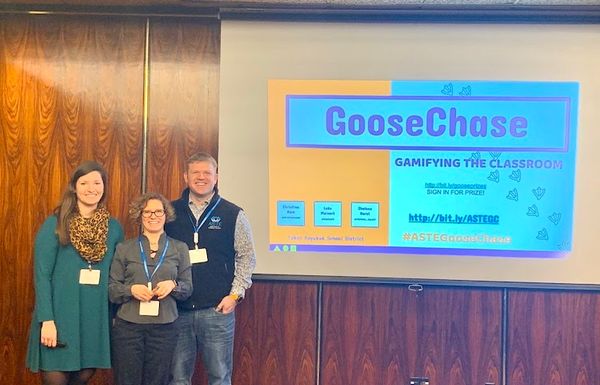
Chelsea Hurst: Tips to Run a Large Scale GooseChase

Virtual Scavenger Hunt Mission Ideas for Kids - Volume 2
No results for your search, please try with something else.
- Skip to main content
- Skip to primary sidebar
- About Art Class Curator
- Media & Press
- Programs for Schools
- Member Login
- Search this website
Art Class Curator
Hands-on and Minds-curious Art Learning
Experience Art Book and Card Deck on Kickstarter!
November 13, 2018 Leave a Comment
The Secret to Planning a Successful Field Trip from Start to Finish
Inside: Planning a field trip? Here’s everything you need to plan a successful art field trip to a museum this year–from managing field trip chaperone behavior to scheduling the buses to preparing your students.

I know. I know! Planning a field trip can be a stressful nightmare. Coordinating with administrators, obtaining transportation, getting permission slips, collecting money, keeping track of students, recruiting chaperones, planning with the museum, and more. The list of to-dos for art field trips are nearly never-ending.
You should take your classes to an art museum. There will be paperwork and headaches and hassles, but planning a field trip is all worth it. Seriously. Let’s talk about why to do it and, more importantly, how.
Importance of Field Trip
Seeing art face to face is a singular experience. There is no way to replicate seeing an artwork in person in a classroom. There’s just not. We can do a lot with hi-resolution projectors, updated textbooks, and full-size posters. Our students can and will connect with the artworks we show them at school, but they deserve to lose their breath and feel the goosebumps that only happen when interacting with art directly.
Textures and tiny details that are lost by a lens or scanner come to life under museum lights. Artworks we’re familiar with can astonish and surprise us when we see their true scale. When I saw Picasso’s Guernica in person, I became utterly transfixed by the depth and texture of the paint and the enormous scale of the composition. The terror and heartbreak were inches away. I could see it all with devastating clarity. The emotion and impact of Guernica reached me through pictures, but I literally could not walk away when I saw it in person. My perspective shifted forevermore thanks to an experience that was impossible to achieve via screen or reproduction.

An art field trip can open our students eyes to the varieties and possibilities of art. Museums allow them to walk through history and dive into the expanse of human expression and experience cultures both familiar and otherwise firsthand. Art has the power to change lives. I’ve talked before about a museum trip that changed the course of my life . An art field trip helps mold our students into world citizens, igniting their curiosity and infusing their futures with wonder and delight.
Learning isn’t limited to the classroom and museums offer students a perfect chance to forge connection internally and externally, with their world and their peers. Classmates will converse with one another and their museum guide, making new meaning and gaining new understanding. These social and communication skills will serve them throughout their lives.
Are field trips worth it?
Budget cuts and a heavy focus on test-taking skills have made field trips seem like an unnecessary luxury rather than an important education tool. Across the country, out of school excursions are becoming less and less common , but the importance of field trip cannot be overstated. Students learn an amazing amount from taking their learning outside of the classroom. A recent study showed field trips help students develop into “civilized young men and women who possess more knowledge about art, have stronger critical-thinking skills, exhibit increased historical empathy, display higher levels of tolerance, and have a greater taste for consuming art and culture”.
In short—yes, that art field trip you’ve been thinking about is 100% worthwhile.
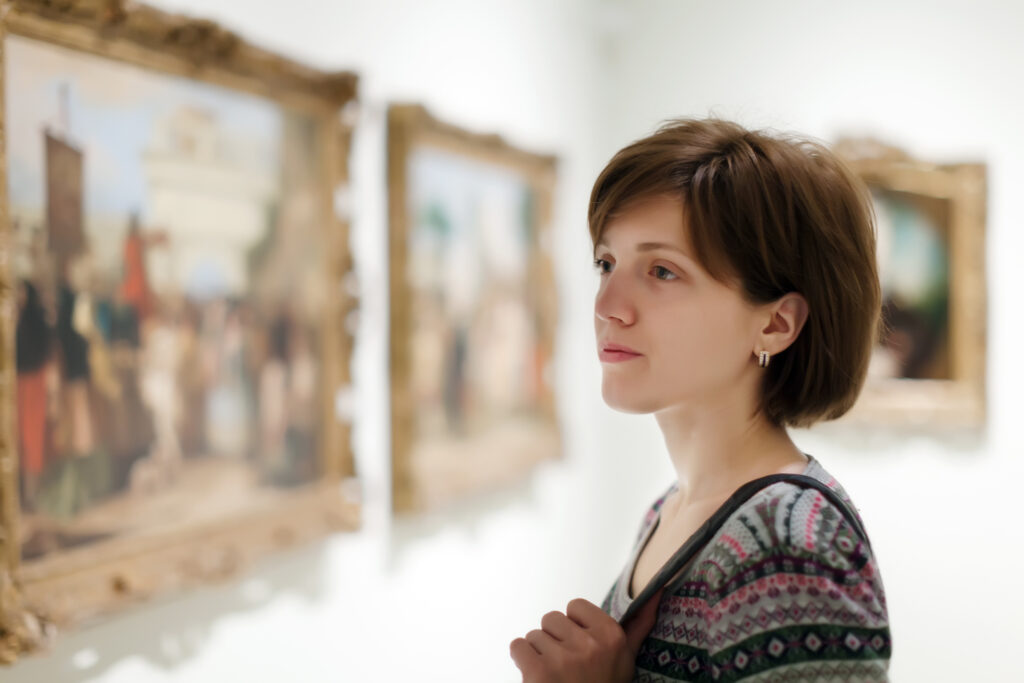
Planning a Field Trip
It’s time to clear your throat, don your strongest teacher voice, and get ready to put your ducks in a single-file line. There’s no such thing as being too prepared when it comes to planning a field trip. That’s why we created a Field Trip Packet with everything you need to plan a successful field trip from start to finish.
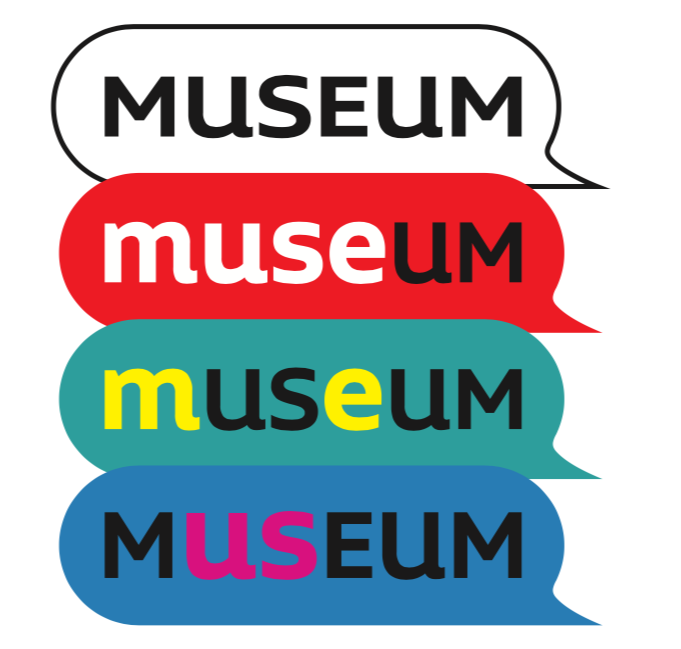
Field Trip Packet
The Field Trip Packet includes:
- Why Field Trips are Important
- Why Field Trips are Worth It
- Scheduling Tips
- Funding Tips
- Parent Communication Tips
- Busing Tips
- Chaperone Tips
- After the Field Trip Tips
- Planning Checklist
- Week of Field Trip Checklist
- Day of Field Trip Checklist
- Student Roster
- Parent Communication Template
- Permission Slip Template
For students:
- Museum & Trip Information Page
- Sketching Page
- Scavenger Hunt
- ‘I Am’ Character Poem
- Twitter Perspectives
- Exploring Place: The 5 Senses
- Trip Reflection Worksheet
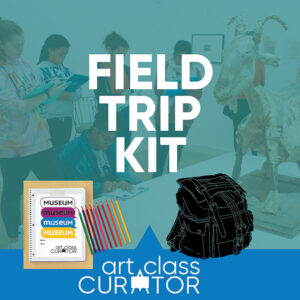
This Museum Field Trip Packet is full of documents to help you plan a successful field trip + worksheets and activities for students to complete during the museum field trip.
Scheduling your Field Trip
Check with your front office or school administration and find out what information you’ll need for planning a field trip. Usually, you’ll need to provide an itinerary of your trip. Be aware, some schools are sticklers and want near minute-by-minute schedules.
Please note, this post includes Amazon affiliate links. As an Amazon Associate I earn from qualifying purchases.
This is also a good time to find out what dates you’ll need to avoid planning a field trip on—testing dates, other field trips, assemblies, and so on. Be sure to ask when you’re allowed to leave and what time you’ll need to be back. Often, field trip times are limited by bus schedules and pickup times.
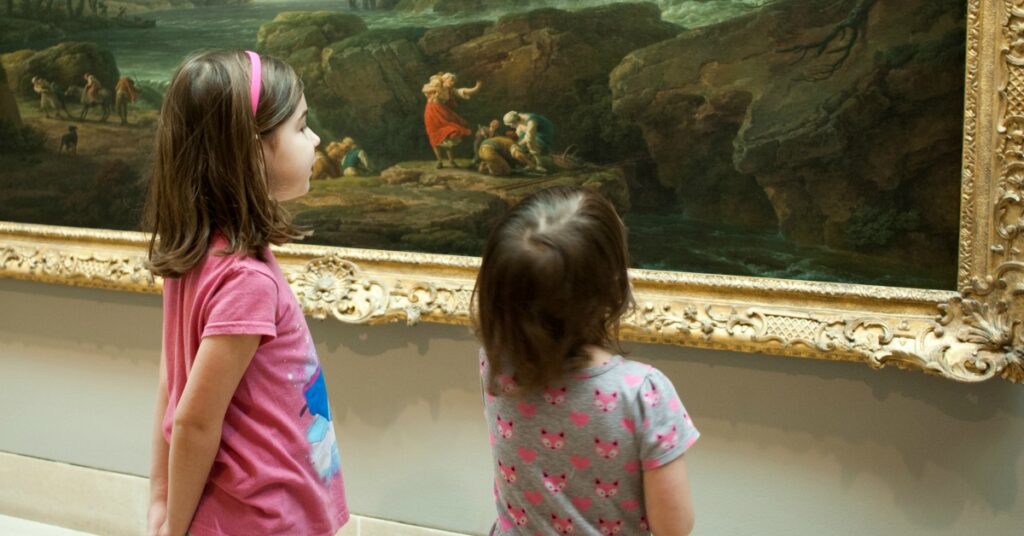
With potential dates in hand, call the art museum to book your tour. Museum staff will usually provide you with all the information you need for planning a field trip, but make sure you get these questions answered:
- How many students are allowed per group? (Museum tours usually limit the number of individuals to 15 or so, but ask your museum so you know for sure.)
- How many chaperones are required?
- What time should you arrive with students?
- Where do you park?
- Where do you enter the museum?
- Where can you eat lunch? Are there any museum policies regarding food that you need to be aware of?
- Can students go into the gift shop?
Field Trip Funding
Talk with your front office about funding your art field trip. Art museum visits are usually free, but someone needs to pay for the bus. Figure out if the school or district can pay for it or do you need to collect money from the students. Divide the amount needed by the number of students going to get the amount each will owe. If you teach at a low-income school, ask the museum if they know of any grant possibilities for funding buses.
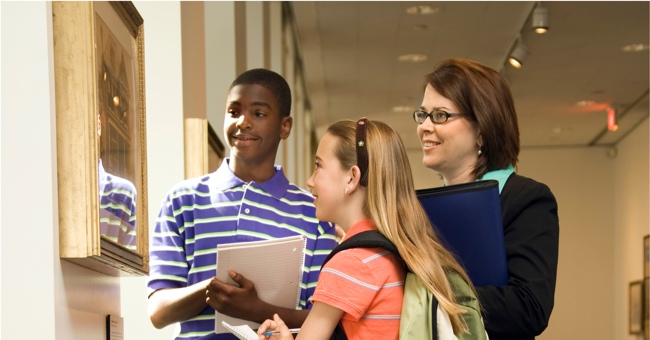
Ask your school about the best method to collect funds. Some schools do not allow teachers to give students change, in which case you’ll need to ask students to bring the exact amount. If you are allowed to make change, keep a bunch of $1 bills on hand. Keep meticulous records of the money collected. Receipt books are an easy way to keep track and can be purchased cheaply from places like Wal-Mart, Target, or an office supply store. This will make keeping track of all the money paid and owed. Trust me, you’ll be glad to have it when a student insists they already paid.
Get a big envelope to hold the funds and keep them locked in your desk or file cabinet. Ask your front office if they want it all turned it at once or at the end of each day. Print a roster of all of the students who are supposed to go on the trip to keep alongside your envelope. Make two columns alongside each name, one for money and another for permission slips.
Field Trip Permission Slip and Parent Communication
Make sure you follow your school’s protocol for sending and collecting field trip permission slips. They should have a standard form you can use. Set a deadline for your students to turn in permission slips well before the field trip and write the deadline across the top in huge, bold letters before you copy and distribute it to students.
With the field trip form, send a letter to the parents about the field trip. As a parent, I sometimes get random permission slips with no information and am lost trying to figure out what it’s for. Write a little note about how excited you are to take the kids to the museum and staple it to the field trip permission slip.
Scheduling Buses
First, figure out who is responsible for scheduling the bus. Do you do it? Does your front office do it? Does the district do it? Even if you think you know, double check! Once the art field trip is scheduled, get the bus scheduled as soon as possible. When planning a field trip, be sure to factor in driving time, getting on and off the bus, and any possible traffic into your decisions about when the bus should arrive for pickup.
When the bus arrives, be sure to get the name and cell phone number of the bus driver, as well as the bus number. You don’t want to be lost in a maze of buses with students in tow or be late getting back to school because you can’t find your driver.

Field Trip Lunch
With so many details to consider, you might forget about planning a field trip lunch, but don’t make that mistake! Consider:
- Will you be back in time for lunch or do you need to bring lunches? Work with the front office and cafeteria staff to plan sack lunches for your students.
- Do the students need to order their sack lunches in advance? If so, get the form to send home alongside the parent letter and permission slip.
- For students packing lunches, it is best to put their lunches in disposable containers so everything can be thrown away and you don’t have to worry about kids losing their favorite lunch box.
- Will the museum allow you to store lunches somewhere inside or will they need to stay on the bus?
- Where will you eat lunch? The museum staff can tell you where to go. If they don’t have a designated courtyard or cafe, consider visiting a nearby park.
- Will you allow students to buy food? Many museums have a cafe or are located in metro areas with nearby restaurants. For example, at the Dallas Museum of Art , there are always food trucks at a park across the street. When I took middle schoolers, I allowed a chaperone to accompany them to the park to buy lunch from the food trucks. If so, don’t forget to add that to your parent letter!

What to Bring with You on the Art Field Trip
- First aid kit (Often the front office or nurse will have something already prepared for you to bring.)
- Roster of all participating students
- Cell phone numbers for your chaperones, plus the school and museum phone numbers
- A map with directions to and from the destination for the bus driver—They probably know where to go, but it’s good to have ready just in case.
- An art field trip museum assignment for the students to complete. Get creative! Look at the current collection on the museum website and create a scavenger hunt or bingo cards. Encourage the students to interact with the artworks by using art appreciation worksheets .
- Pencils and paper
In addition to these things, talk with the school nurse about which students are going on the trip to find out if any medications or special precautions are necessary.
Field Trip Chaperones
Once you know how many field trip chaperones you need, recruit other teachers and parents. Your school or the museum you’re visiting will likely have their own guidelines for you to follow. As a rule of thumb for museum tours, be sure you have at least 1 adult per 12-15 kids.
Print personal copies of all the information each field trip chaperone will need—times, when and where to meet, the bus number, names of children they will watch, expected behavior, and your cell number. (Don’t forget to get their cell number as well!) Put the information in a folder or on a clipboard so it’s easy to keep everything together.
For each teacher going on the trip, make sure substitutes will be available to cover their classes. If there will be a sub in your classroom, plan your sub lessons. Pair an art appreciation worksheet with an artwork for an easy, mess-free sub lesson. You can even tie it into the art field trip by choosing one or more artworks students will see in the museum.

Preparing the Students for the Trip
Get your students excited for the art field trip! Beyond the novelty of getting out of school for a bit, you want them psyched for the experience too. Here are some ways to do that:
- Share pictures of the museum and the type of art they will see
- Lead art discussions with students so they can show off their awesome art interpretation skills (They’ll be sure to impress their chaperones and museum guides!)
- Discuss expected behavior. (More on this below)
- Use museum resources—museums often send great lessons and supplemental information before your art field trip. These are perfect for both pre-visit and post-visit lessons and will help students remember what they see.
- Tell students the schedule in advance what you’ll expect from them and and what they should expect regarding lunch, buses, gift shop, free time in the museum, etc. Repeat this information before you leave, on the bus, and when you arrive.
Student Behavior
As a former museum educator, I can tell you I rarely had an uncontrollable student groups. Students love field trips and the museum environment helps them stay in line. Nonetheless, discuss behavior in advance, plan and tell them consequences for misbehavior. Student behavior is a reflection on you and the school, so make sure to follow through on consequences if needed. Remember, if they respect you, they won’t want to make you look bad . Be sure students know that you’re watching and that all of the field trip chaperones will report back on their behavior.
Student Rules for Art Field Trips
- Don’t touch the art—keep an arm’s length from artworks at all times.
- Don’t yell.
- Treat the docent, museum staff, chaperones, and each other with respect.
- Participate in the lesson.
- No bags/backpacks allowed.
- No food/candy/gum/drinks
- No pens, pencils only. (The museum will provide pencils when needed.)
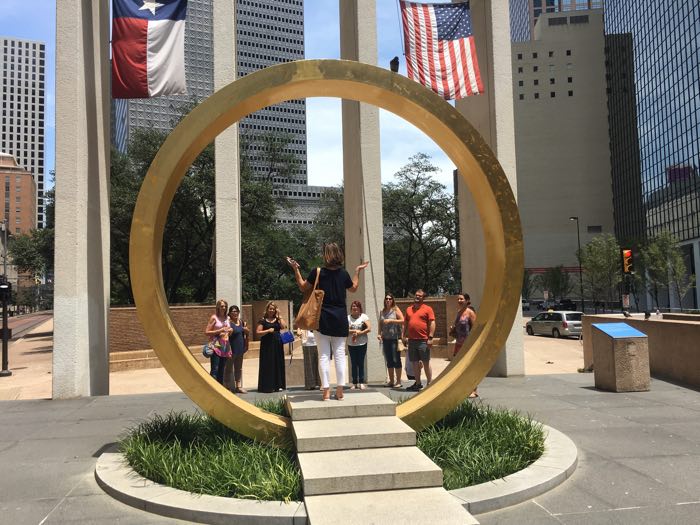
Field Trip Chaperone Behavior
Honestly, the worst behavior I saw when I was a museum teacher came from parents and field trip chaperones. Don’t shy away from including a do and don’t list in the information you give chaperones.
Don’t Do List for Field Trip Chaperones
- Talk loudly in the background with other adults.
- Treat the tour as a break. The museum teacher needs your help controlling poor behavior and inattention.
- Answer questions asked of students. It’s fun to participate in art discussions, but don’t take the opportunity away from the students. (If you’re still itching to participate in art discussions, join me every Monday at 6 pm Central on Facebook for Masterpiece Monday ! Get reminders by clicking here .)
- Play games or scroll through social media on your phone. If you aren’t respecting the learning and experience, your students won’t either.
- Lose anyone.
What to Do List for Field Trip Chaperones
- Direct student attention. Pay attention to who is or isn’t engaged. If someone isn’t paying attention, give them your best teacher look, stand by them, and talk to them between stops on the tour about their behavior.
- Model enjoyment and delight in the art. Engage with the art and the students to show them that this is a wonderful, fun experience.
- Know the info—who is in your group, where to go and when to be there, the bus number, etc.
- Constantly check to make sure all of the students in your group are present and accounted for. Count again and again.
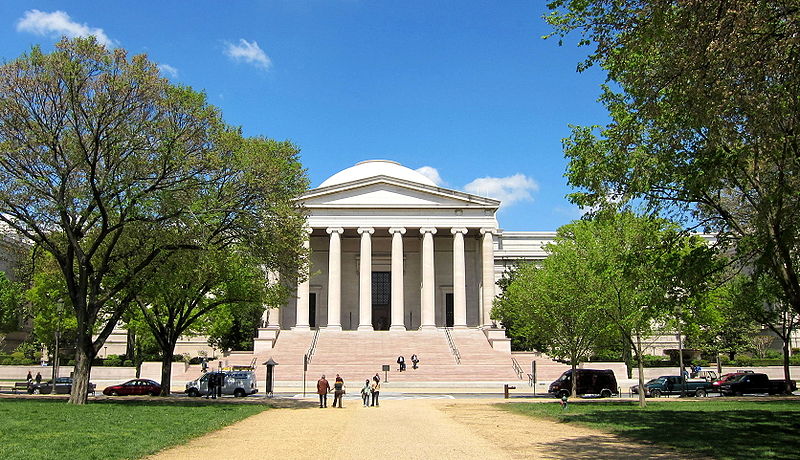
After your Art Field Trip
When planning a field trip, don’t forget to think about the follow-up! On the return bus ride or when you get back to school:
- Have students write three art field trip takeaways.
- Ask students to reflect and write a paragraph about the experience.
- Lead a class discussion about what they saw and did. (What did they like/not like? What surprised them about the experience? Do they want to go back?)
- Have students draw pictures for or write thank you letters to send to the art museum. (The museum most likely offered that tour for free and the teacher was probably a volunteer. Make their day with a lovely note.)
- Thank students for good behavior
- Follow through on the discipline plan by giving consequences for poor student behavior.
- Send a follow up letter to parents telling them about the art field trip and encouraging them to visit the art museum as a family so students can show their parents what they learned. Make sure to include information and upcoming events at the museum, as well as any free admission the museum offers.
When all is said and done, take time to reflect on the art field trip yourself. Take stock of what went well and what didn’t work. Take note what your students enjoyed and what you’d like to do differently next time. Breathe. Enjoy a job well done. Then, start planning your next artful excursion!
You May Also Enjoy These Posts:

Reader Interactions
Leave a comment cancel reply.
Your email address will not be published. Required fields are marked *
This site uses Akismet to reduce spam. Learn how your comment data is processed .
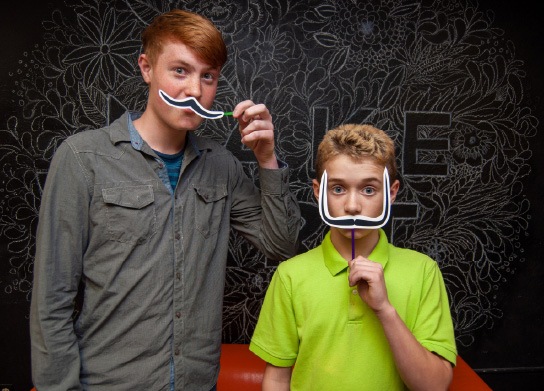
Get Art Inspiration To Your Inbox!
Free Worksheets!
*Free Bundle of Art Appreciation Worksheets*
In this free bundle of art worksheets, you receive six ready-to-use art worksheets with looking activities designed to work with almost any work of art.
Bias of The Boston Globe
- Balanced News
- Story of the Week
- News Curation Principles
- Newsletters
- Balanced Search
A mind-bending trip: inside the interactive WNDR Museum
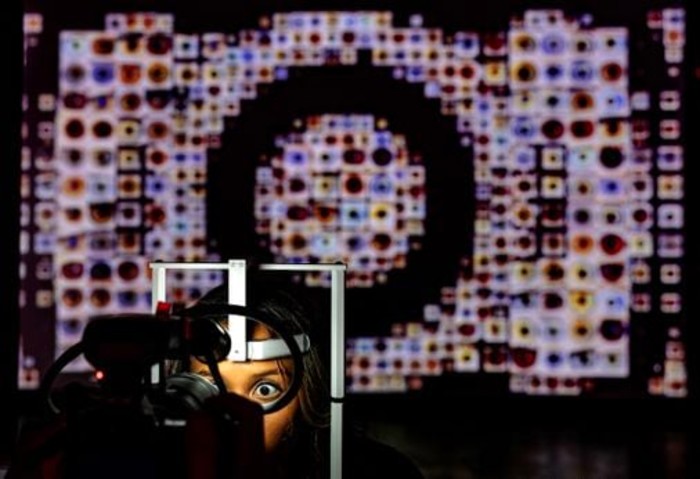
These innovators have just removed a couple of vowels. It is pronounced “wonder,” and its interactive exhibits at the museum are mostly wonderful. It is a smorgasbord for the senses. Being creative means taking chances. So don’t avoid the WNDR Museum because it sounds like a radio station that you’ve never heard of. The positive vibe is evident the moment a visitor arrives. “We are all artists,” a sign says. That encouraging message is the exact opposite of what the great Japanese artist Yayoi Kusama told me when I visited...
The Boston Globe
Related Coverage

AllSides Picks
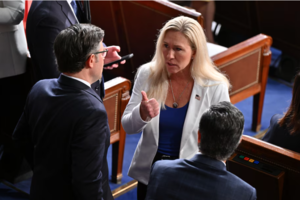
April 16th, 2024
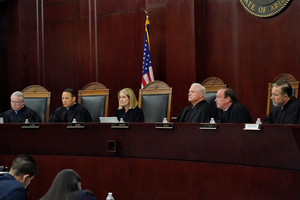
April 15th, 2024

More News about Technology from the Left , Center and Right
From the left, from the center, from the right.


- Outreach Performances & Programs
- Fundraising
- Field trip lesson plans
- Field Trips Grants
- Service Learning
- Hot Springs
- Little Rock
- Los Angeles
- San Francisco
- Statewide / Region
- Daytona Beach
- Fort Lauderdale
- Gainesville
- Jacksonville
- Orlando-Metro
- Palm Beach Metro
- Space Coast
- Tallahassee
- St. Augustine
- St Petersburg-Clearwater
- Atlanta-Metro
- Chicago-Metro
- Springfield
- Central Region
- East Region
- Indianapolis
- North Region
- South Central Region
- South Region
- West Region
- Bowling Green
- Baton Rouge
- New Orleans
- Baltimore-Metro
- The Berkshires
- Boston-Metro
- Cape Cod/Plymouth
- Greater Lowell
- Greater Springfield
- Capital-River Region
- Delta Region
- Gulf Coast Region
- Hills Region
- Pines Region
- Jefferson City
- Kansas City
- Springfield-MO
- Delaware River Region
- Gateway Region NJ
- Greater Atlantic City
- Shore Region
- Skylands Region
- Southern Shore Region
- Capital District Region
- Central New York Region
- Finger Lakes Region
- Hudson Valley Region
- Long Island
- Mohawk Valley Region
- New York City
- North Country Region
- Southern Tier Region
- Western New York Region
- Canton Ohio
- Cincinnati Ohio
- Cleveland Ohio
- Columbus Ohio
- Oklahoma City
- Allegheny Mts. & Valleys
- Gettysburg/York
- Harrisburg-Metro
- Lakes & Erie Regions
- Lancaster-Metro
- Lehigh Valley
- Philadelphia Metro
- Pittsburgh & Laurel Highlands
- The Poconos
- Scranton/Wilkes-Barre
- Chattanooga
- East Tennessee
- Middle Tennessee
- The Smokies
- West Tennessee
- Bryan - College Station
- Corpus Christi
- Dallas/Fort Worth
- Panhandle Plains Region
- San Antonio
- Central Virginia
- Chesapeake Bay Region
- Coastal Virginia -Eastern Shore
- Coastal Virginia-Hampton Roads
- Northern Virginia
- Shenandoah Valley
- Southern Virginia
- Southwest Virginia-Blue Ridge Highlands
- Southwest Virginia-Heart of the Appalachia
- Virginia Mountains
- Martinsburg
- Madison Wisconsin
NORTH CAROLINA Field Trips
To help plan APRIL curriculum focused classroom activities, field trips and school assembly programs, these April themed celebrations might be a helpful focus. MONTHLY : Keep America Beautiful. National Gardens. National Humor. National Poetry. Stress Awareness. DAILY : Apr. 2: International Children’s Book Day. Apr. 3: National Geologists Day. Apr. 4: School Librarians’ Day. Apr. 5: Read a Road May Day. Apr. 7: World Health Day. Apr. 8: Draw a Picture of a Bird Day. Zoo Lovers Day. Apr. 10: National Farm Animals Day. Apr. 18: National Scrabble Day. Apr. 15: World Art Day. Apr. 22: Earth Day. Apr. 25: World Penguin Day. CLICK on the ACTIVITY FILTER below for activity type of field trips to learn about. For those unable to travel to these locations, have the fun come to you. Check out the Outreach Field Trips & School Assembly Programs section.
- Financial Support
- Children's Museums & Indoor Fun
- Petting Zoos/Barnyard Fun
- Archaeology/Paleontology
- Government, Civics & Presidents
- Historic Places
- Historical Railroad Excursions
- History Museums, Exhibits & Sites
- Lighthouses & Seaports
- Living History
- Multicultural & Heritage
- People & Notable Figures
- Transportation: Boats, Planes, Trains, & Trollies
- Team Building
- History, Heritage & Civics Outreach Field Trips
- Mobile Recreation, Games & Fitness
- Mobile Science, Astronomy & Planetarium, Nature & STEM Programs
- Adventure Parks, Climbing, Ninja & Ropes Course, Ziplines
- SAME-DAY BOOKINGS
- Aquariums, Marine Life, Hatcheries
- Birds, Butterflies, Bees
- Botanical Gardens & Arboreta
- Caves, Canyons, Mines & Gorges
- Environmental Studies, Outdoor Education, Conservation, Sustainability
- Farms, Mazes, Pick-Your-Own
- Marine Science
- Mineral & Gemstone Panning
- Planetariums & Astronomy
- Science Boat Excursions
- Science Museums & Exhibits
- STEM/STEAM Enrichment
- Zoos, Wildlife, Safari Tours, Reptiles, Animal Shows, Vertebrates
- Science & Nature
- Art Museums, Design, Exhibits, Photography & Films
- Authors, Literacy, Poetry, Storytelling & Writing
- Literature, Poetry & Shakespeare
- Theater, Dance, Music, Movies, Shows
- Early Childhood
- Elementary School
- Middle School
- High School
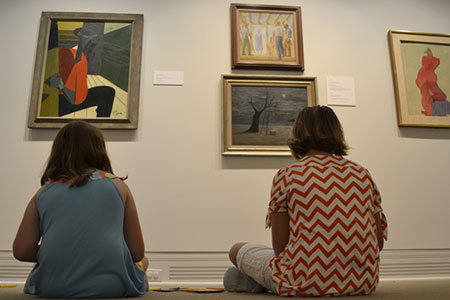
Ackland Art Museum
Ackland Art Museum features a collection of art that spans over 4,000 years of achievement. The museum’s collection includes art from the West, Asia, Africa, and the ancient Mediterranean.
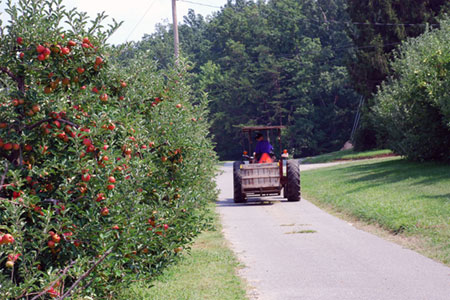
Apple Hill Orchard & Cider Mill
Learn about the process of apple cidering at Apple Hill Orchard & Cider Mill. From Aug.-Oct., groups of all ages can take an educational tour of the orchard and cider mill, and also visit for apple picking fun.
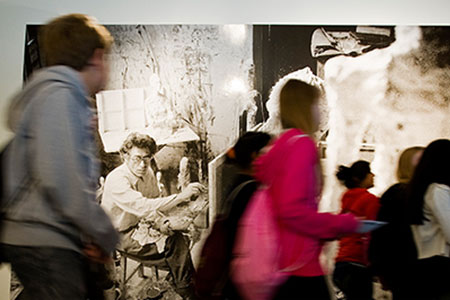
Bechtler Museum of Modern Art
The Bechtler Museum of Modern Art features a collection of modern and abstract art including paintings, sculpture, and drawings work by artists such as Giacometti, Warhol, and Le Corbusier.

Bentonville Battlefield State Historic Site
Visit the site of the Civil War’s 1965 Battle of Bentonville. The historic site offers groups a chance to see Harper House, which served as a field hospital for the Union Army, as well as a Confederate cemetery and Union trenches.
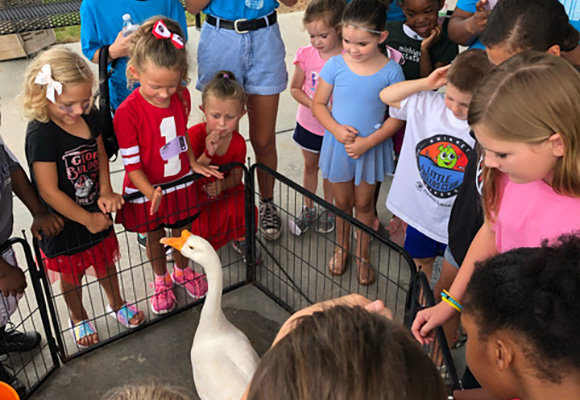
Camp Carousel
The Camp Carousel Petting Zoo is home to over 100 animals—a number of which are rescued animals. See friendly sheep and goats, ponies, pigs, ducks, and more. IN-PERSON PROGRAMS: Georgia, North Carolina, South Carolina.

Cape Fear Botanical Garden
Cape Fear Botanical Garden is an ideal outdoor classroom for learning about flowers, planting, seeds, sprouts, soil, insects, and much more. Cape Fear Botanical Garden’s 80 acres feature nature trails, a natural amphitheater, ravines, ponds, aquatic plants, and other natural elements.
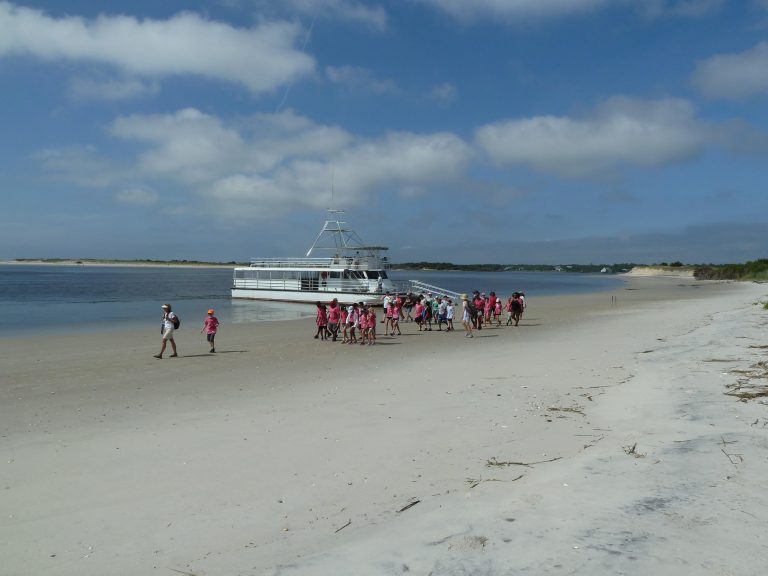
Carolina Ocean Studies
Discover the wonders of the Carolina coast through a field trip to uninhabited barrier islands! For 30 years, Carolina Ocean Studies has been taking K-12 students out on field trips to North Carolina barrier islands.
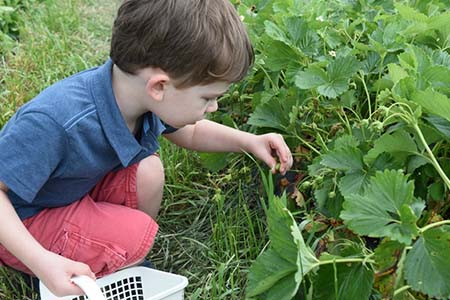
Carrigan Farms
At Carrigan Farms, groups can explore the apple orchard or the pumpkin patch via hayride, visit the animals at the petting station, enjoy picking fruits or vegetables, and see thousands of bees at work.
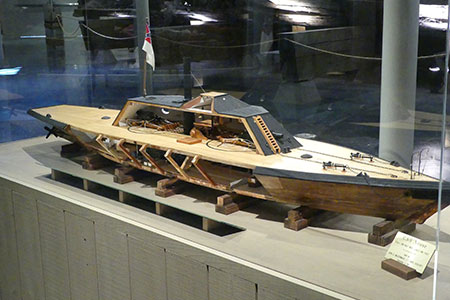
CSS Neuse Civil War Interpretive Center
Visit the ironclad gunboat CSS Neuse, which was used by the Confederate Army in a failed attempt to retake the city of New Bern and restore control of the lower Neuse River.

Currituck Beach Lighthouse
Currituck Beach Lighthouse was the last of four beacons positioned from Cape Henry, Virginia to Cape Hatteras, filling the “dark spot” on North Carolina’s coast. Groups can climb the 214 steps all the way to the top of the lighthouse to see breathtaking views of the surrounding area below.
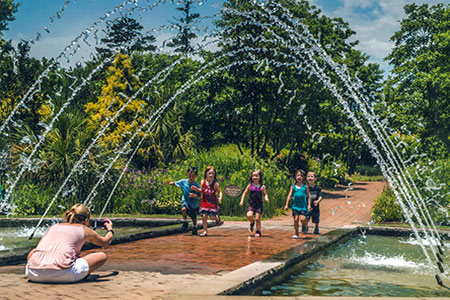
Daniel Stowe Botanical Garden
The Daniel Stowe Botanical Garden is a 380-acre site featuring picturesque scenery and natural elements consisting of rolling meadows, a lakefront, 13 gardens, and a woodland trail.
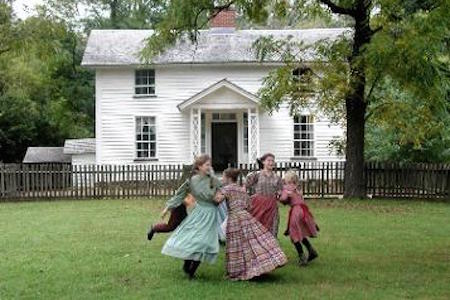
Duke Homestead State Historic Site and Tobacco Museum
Visit the historic site where George Washington Duke grew tobacco and started one of the largest American tobacco companies. The homestead offers guided house tours with a look at museum exhibits on the tobacco industry, the history of tobacco, and a 17-minute orientation film.
FieldTripdirectory.com offers enriching experiences for North Carolina school groups, scout groups, homeschool groups, camp groups and families at North Carolina Museums.
North Carolina Museums offer field trips that offer hands-on exhibits, guided tours and guided activities for early childhood through high school grades. North Carolina Art Museums , Science Museums , History Museums , Multicultural Museums and Children’s Museums offers educational experiences that support classroom curriculum and scout badge achievement. Beside museums, you can search for other learning experiences at Botanical Gardens, Planetariums, Living History Programs, STEM & STEAM, Planetariums, Farms, Zoos and Aquariums, Theaters and Concerts, Service Learning and more.
Can’t go on a field trip to a museum, your students, scouts, and families can still experience these fun enriching experience by scheduling a Museum Virtual Field Trip anywhere and at anytime.
Want the fun to come to you- book a School Assembly Programs, Outreach Field Trips or Residency at your school, homeschool association or scout council. They support and enhance a school’s curriculum, offers opportunities for scout badge achievement and enriches a camp program. There are mobile museum exhibits, traveling planetariums and classroom and grade level workshops and residencies.
To help fund field trips, virtual programs and school assembly programs visit our section on Grants and Fundraising Programs .
FieldTripDirectory.com (formerly ClassTrips.com and CampDirectorsResources.com) offers field trip ideas for class trips, scout group trips, camp group field trips, and homeschool group field trips in North Carolina—early childhood through college. Search for class trips in North Carolina by by group type, cost, activity/curriculum type, grade level, distance, and venue name or keyword. Day class trips are divided by curriculum and subject area:
- ARTS & ENTERTAINMENT Find North Carolina art museums, theater, dance, and music concert field trips.
- EARLY CHILDHOOD Find North Carolina class trips to children’s museums, petting zoos, and kids’ shows.
- HISTORY/SOCIAL STUDIES View North Carolina history museums, government & civics, historic sites, living history museums, and multicultural field trip ideas.
- LIFE SKILLS Find North Carolina team building field trips, health & safety exhibits, and character education experiences.
- SCIENCE & NATURE Find North Carolina aquariums, botanical gardens, environmental studies & nature centers, farms & mazes, planetariums, science museums, STEAM & STEM field trips, dinosaur exhibits, and zoos.
- RECREATION Find North Carolina field trip ideas for adventure parks, ropes courses, ziplines, boat excursions, amusement parks, waterparks, kayaking, rafting, tubing, laser tag paintball, roller skating rinks, ice-skating rinks, mini-golf attractions, indoor amusement & recreation centers, and outdoor amusement & recreation centers.
Overnight field trips include trips to NYC, trips to Boston, trips to Philadelphia, trips to Washington, DC, trips to Chicago, trips to Atlanta, trips to Austin, and other historic cities throughout the US. Retreats are available for environmental education, team building, and recreation. We created field trip lesson plans to help teachers, scout leaders, camp counselors, and homeschool parents provide an enriching experience for their groups. We know funds for class trips are limited, so we’ve included grants for field trips that cover admission, transportation, and more. It’s important that students and youth explore new environments, learn about other cultures, and develop an understanding of inclusivity as part of the educational process. People learn in different ways—through hearing, seeing, touching, talking, or doing. Class trips can provide a multi-dimensional learning experience. FieldTripDirectory.com can help you find the right trip for your group. A world of experiences is just a click away at FieldTripDirectory.com.

IMAGES
COMMENTS
Nature Lab. Open Today: 9:30 am to 5 pm. 213.763.DINO (3466) These free, printable field trip lesson plans will help your students connect classroom curriculum with their on-site museum experiences.
A great resource for this kind of exploration is the Field Trip guide from Monument Lab. Remix the resources. Much of curators' work in a museum involves the sequencing of objects so that they tell a story. Exploring "how objects speak" is a compelling concept that can lend itself to deeper learning after a visit.
An art museum field trip lesson plan to enhance learning for school, scout, homeschool, and camp field trips to art museums. Main Menu. Blog; Destinations. ... Many are online and you can download teacher and student material to enhance lesson plans before and after your field trip. KNOWLEDGE. Learn about art periods and the culture and history ...
The ticket to making an art museum field trip fun for kids of all ages is to get them to engage with the art they are seeing. This does not mean touching the art, but it might mean letting the art touch them. While this may sound a little flowery, the intent is legitimate. Art patrons reflect on art in a way that enables the art to speak to ...
A class field trip to a museum can spark intense student interest as well as nurture thinking skills. But practical concerns, such as money and time, limit the location and number of museums a class can visit. ... Lesson Plan Source Education World Submitted By Gary Hopkins National Standards LANGUAGE ARTS: EnglishGRADES K - 12NL-ENG.K-12.2 ...
A field trip to a science center represents a unique and engaging opportunity to extend classroom learning into the real-world of science. This field trip lesson plan is designed to blend the traditional exploration of scientific exhibits with the innovative engagement of a Goosechase Interactive Experience.
Here are 5 tips to help you pull off a memorable field trip. 1. Schedule and plan ahead. There are a lot of planning details that go into a school field trip. Start by looking at your school calendar and propose a few potential dates to administration and students' classroom teachers. Once you've ruled out any date conflicts, make ...
Planet Wordshops for Students. Wordshop packages are offered from 10 a.m. - 12 p.m. and 12 p.m. - 2 p.m. on weekdays when Planet Word is open, starting with the Wordshop and ending with an hour of focused gallery time. Wordshops are designed for classes of 35 or fewer and last an hour unless otherwise noted. Virtual Wordshops cost $125; on ...
Looking and Learning in the Art Museum — Lesson 1. To prepare for a field trip to a local art museum, art class members journal their initial reactions to a reproduction of the work they will focus on during their visit. The whole class then considers the artistic elements in the piece...
Looking and Learning in the Art Museum — Lesson 1. To prepare for a field trip to a local art museum, art class members journal their initial reactions to a reproduction of the work they will focus on during their visit. The whole class then considers the artistic elements in the piece...
AHTR's Visiting the Museum Learning Resource aims to help ... questions about museum design in their classes, regardless of the logistical challenges that often prevent organized field trips. In 2018, a grant from CUNY's OER initiative allowed AHTR to expand these resources with additional bibliography, adaptable lesson plans and assignment ...
Rebecca Everson. Goosechase EDU Ambassador Program Manager & K-6 Teacher. Get the most out of your upcoming museum field trip. This simple lesson plan is perfect for any grade, and versatile enough to work for any history lesson.
Science Museum Lesson Plan. Please note, this lesson plan was created by FieldTripDirectory.com as a general guide and is not specific to any particular venue listed on our site. There are a wide variety of science museums out there. From archaeological artifacts to galactic adventures in museum planetarium domes, there's something for just ...
Here's everything you need to plan a successful art field trip to a museum this year-from managing field trip chaperone behavior to scheduling the buses to preparing your students. ... Participate in the lesson. No bags/backpacks allowed. No food/candy/gum/drinks; No pens, pencils only. (The museum will provide pencils when needed.)
Looking and Learning in the Art Museum — Lesson 1. To prepare for a field trip to a local art museum, art class members journal their initial reactions to a reproduction of the work they will focus on during their visit. The whole class then considers the artistic elements in the piece...
The first children's museum in the world was the Brooklyn Children's Museum, founded in 1899. Hundreds of children's museums have opened in the United States since then. As of 2007, the Association of Children's Museums estimated that there were approximately 80 children's museums in development alone. Children's museums are unique ...
field trip lesson plan - Free download as Word Doc (.doc / .docx), PDF File (.pdf), Text File (.txt) or read online for free. Scribd is the world's largest social reading and publishing site.
Find more information about field trips to the Tennessee State Museum and view detailed lesson plans that correspond to museum visits for students. Contact us to plan your field trip today. Close. Visit. Plan Your Visit ... On-Site Field Trip Request Form. To contact the Education Department, please e-mail [email protected]. Field Trips. On ...
The National Liberty Museum brings liberty to life through stories of people whose character and courage have expanded liberty for all. GRADE LEVEL - All Grades PROGRAM TYPE - Day Trips, Self-Guided Activities, Guided Activities COST - Fee GROUP TYPE - School, Scout, Camp, Homeschool PENNSYLVANIA. Philadelphia TEL - 215-925-2800.
field trip lesson plan - Free download as Word Doc (.doc / .docx), PDF File (.pdf), Text File (.txt) or read online for free. Scribd is the world's largest social reading and publishing site.
It is a smorgasbord for the senses. Being creative means taking chances. So don't avoid the WNDR Museum because it sounds like a radio station that you've never heard of. The positive vibe is evident the moment a visitor arrives. "We are all artists," a sign says. That encouraging message is the exact opposite of what the great Japanese ...
GRADE LEVEL - Elementary School, Middle School, High School, College PROGRAM TYPE - Day Trips, Overnight Trips, Guided Tours, Guided Activities. COST - Fee GROUP TYPE - School, Scout, Camp, Homeschool MASSACHUSETTS. The Berkshires TEL - 413-339-6617 ext. 330 Read More.
GRADE LEVEL - All Grades PROGRAM TYPE - Day Trips, Performances COST - Fee GROUP TYPE - School, Scout, Homeschool, Family TENNESSEE. Middle Tennessee. Nashville TEL - 615-254-9103. 1. 2. Find the perfect Nashville field trip for school, scout, camp, and homeschool groups or plan a family outing with the Field Trip Directory.
Groups can climb the 214 steps all the way to the top of the lighthouse to see breathtaking views of the surrounding area below. GRADE LEVEL - All Grades PROGRAM TYPE - Day Trips, Guided Tours. COST - Fee GROUP TYPE - School, Scout, Camp, Homeschool NORTH CAROLINA. Corolla TEL - 252-453-4939 Read More.